 How many times have we put the finishing touches on a well-thought-out communications/PR assignment, only to have someone in a position of power pull the plug as we’re about to launch – or worse yet, after we’ve begun? We thought we had alignment, but wonder: where did we go wrong?
How many times have we put the finishing touches on a well-thought-out communications/PR assignment, only to have someone in a position of power pull the plug as we’re about to launch – or worse yet, after we’ve begun? We thought we had alignment, but wonder: where did we go wrong?
The likely truth is that we didn’t go wrong. Rather the rules, processes or people changed along the way, and the new players – or circumstances we had no line of sight to see – impact the plans we’ve made. It happens more often than you’d think, and even the most experienced senior communicators have to deal with it. A few tips on ensuring you get – and keep – alignment, from start to finish…..
CHECK IN(S) EARLY AND OFTEN — With the luxury of some planning time for larger-scale events, any plan should have “check ins” with key stakeholders to ensure that those “people in power” have opportunities to endorse or course correct along the way. Who, and when, depends on your culture, the players and timeframes. If you’re new to an organization, get help from the most senior advisor you can find. If you’re experienced, it’s still a good idea to map out these stakeholders and align up front.
TRUTH AND CONSEQUENCES — Outlining consequences for delayed or ignored feedback from key stakeholders is a big idea. With the possible exception of a CEO, most other executives/stakeholders respond to a little pressure when specific consequences are outlined. Specifying that delayed feedback – or no feedback at all – can compromise results, cost more and/or lessen a competitive advantage is one way to get someone’s attention. Also, give executives and their administrators a “heads up” that a review is needed and forewarn them of any tight turn-arounds needed. This will help those executives – and their assistants – manage their own priorities, and give you solid ground on which to stand if the feedback doesn’t come back as requested.
STAY TRUE TO THE GOAL — Having a clearly articulated end-state/goal or “destination” is always a good place to start with every check in. This “litmus test” enables you to test all feedback/new ideas against the project was designed to deliver in the first place. Without one, go fishing; flounder will be your best catch.
LOOK AROUND – Things change. Stuff happens. Be aware of people moving into – and out of – key roles, of competitive developments and marketplace shifts. Any, and all, of these can impact planning and execution of the best-laid communication plans. A great way to ensure you’re staying on track with new developments is having a list of 5-10 assumptions upon which the plan was built. This allows you and your stakeholders to review information with context of what you’re thinking (especially if you’re not there in person to explain).
TALK – For the most challenging of stakeholders, think through whether it makes sense to schedule time to do a face-to-face review. Senior executives, if they’re key stakeholders, might prefer a brief review to ensure they remain “on board.” Here again, culture, norms and personal preferences factor in.
HOT SPOTS – Every communication plan should clearly articulate the top 2-3 risks, or “hot spots” that you should highlight early, and keep highlighting. This helps manage expectations for that “perfect plan” when there’s a high/strong probability that execution could lead to some negative results. Importantly, specify what you’re doing to mitigate those risks or hot spots. It’s when you don’t highlight these risks up front that the best laid plans can unravel at the last minute.
info@northstarcomms.com


